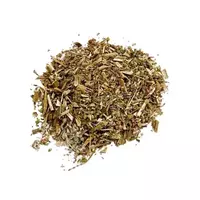Water pepper

The herbaceous plant water pepper (pepper highlander) belongs to the genus Peach and grows in the tropical and temperate climates of the Northern Hemisphere of the earth. In addition to the scientific name, the species Persicaria hydropiper or water pepper is called frog, wild or forest mustard, suburch, pepper buckwheat or pepper highlander. Interestingly, water pepper (pepper highlander) grows in a fairly large area, which includes countries of Europe, Africa, as well as Australia, the Philippines and the Far East.
Water pepper grows in damp lowlands, swamps and on the banks of rivers or lakes. The chemical composition of water pepper (pepper highlander) contains essential oils, carotene, tocopherol, ascorbic acid, as well as tannins. This is only a small part of the substances that form the basis of the chemical composition of the plant. All biologically active compounds that contain water pepper have a positive effect on human health. Therefore, people have learned to process and harvest almost all the components of the plant.
The stem of water pepper usually reaches 90 cm, the leaves are lanceolate, the plant blooms with shoots that are collected in brushes in the form of small spikelets. The fruit of water pepper is a dark-colored nut. The entire terrestrial part of the plant is used to make spices. Usually, for culinary purposes, peppermint is ground to a powdery state.
The spice is great for fresh vegetable salads as well as soups and sauces. In Asian countries, fresh bittersweet peppercorns taste bitter. Usually, fresh leaves of water pepper are decorated with ready-made dishes. The spice emphasizes the peppery taste, so it is better to use fresh leaves of water pepper to make spicy dishes.
It is noteworthy that during the drying process, the distinctive bitterness of the plant disappears. Water pepper is often used in healing infusions. Even the ancient Greeks knew about the useful properties of the plant and applied them in practice. Pepper highlander has a beneficial effect on the circulatory system of the human body. Water pepper is part of drugs that help with malaria.
Water pepper is considered an effective means of traditional medicine for diseases such as ulcer, asthma, eczema, as well as digestive problems or thyroid diseases. In addition to the unique vitamin-mineral composition and beneficial properties of the plant, water pepper is considered an excellent honeycomb. Moreover, honey, which is obtained from the flowers of the peppermint highlander, is distinguished by its subtle floral taste and aroma. The water pepper plant has a wide range of uses, so pepper is not only used as a spice or medicine. From the ground part of the peppermint highlander, a paint of golden yellow and green shades is obtained. The famous paint of a distinctive swamp-green or protective color is obtained from water pepper (pepper highlander).
water pepper 0.1 kCal
Energy value of water pepper (Ratio of proteins, fats, carbohydrates - ju):
Proteins: 0.1 g (~ 0 kCal)
Fats: 0.1 g (~ 1 kCal)
Carbohydrates: 0.1 g (~ 0 kCal)
Energy ratio (b | y): 400% | 900% | 400%
 Español
Español Français
Français Português
Português Русский
Русский 简体中文
简体中文 繁體中文
繁體中文 日本語
日本語 한국어
한국어 العربية
العربية Türkçe
Türkçe Қазақ
Қазақ Deutsch
Deutsch Italiano
Italiano Українська
Українська
